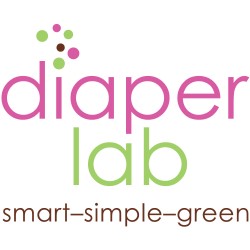An easy overview of cloth diapers
The basic design and construction of all diapering systems—including both disposables and cloth—comes down to only two important features:
- An external barrier, which servers as a waterproof layer and containment shell to keep solids in.
- Internal absorbent material, which soaks up and retains liquid.
How these functions are met give cloth diapers their amazing diversity of design and styling. The styles of diapers differ primarily by how the external barrier and internal absorbent material are put together.
The most modern and convenient diapers, known as All-in-Ones (AIOs), combine both components in one package, and are as easy-to-use as a disposable. While not as simple, the most economical approach to cloth diapering uses prefolds, which are the flat, rectangular cloth diapers which most people know from the original days of cloth diapers, and a simple, waterproof cover.
While some people will choose a single brand or style of diaper, many find that they like to have a variety of diapers in their stash, depending upon when, who, and how the diapers will be used. Some special situations which you might consider include:
- during nighttime or for long naps;
- for babies who are heavy wetters;
- if you have twins or multiples;
- for premature or other special-need infants;
- for daycare providers, sitters, and other frequent caretakers;
- for reluctant or uncertain spouses or family members.
Regardless, for full-time cloth diapering of an infant you will need 24 to 30 diapers, while for older babies and toddlers you should have 18 to 24 diapers. With this many diapers, you will only need to wash every two to three days. Newborns will typically go through 10 to 12 diaper changes a day, while babies six months and older tend to only need 8 to 10 diaper changes each day. Because of this, and since newborns grow so rapidly, many people who begin cloth diapers with their newborn will use prefolds and covers initially, and switching to one of the other styles when their baby is three to six months old.

